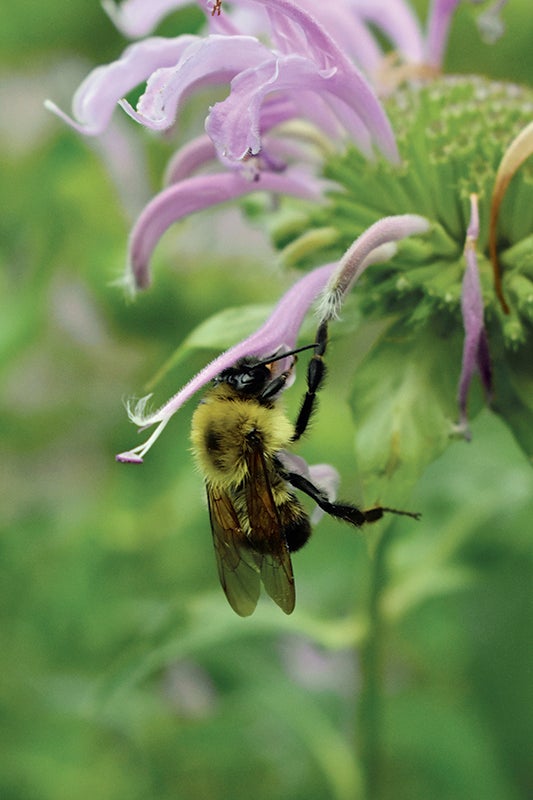Study finds state bee in tough shape
Published 4:35 pm Tuesday, April 9, 2024

- Alison Witter took this photo of a bee on a flower last spring at Myre-Big Island State Park. She spotted it while walking along the bike trail.
|
Getting your Trinity Audio player ready...
|
By Dan Gunderson, Minnesota Public Radio News
For the first time, researchers have analyzed the DNA of rusty patched bumble bees across the insect’s range. The results add urgency to efforts to conserve the endangered species.
Using a non-lethal technique, scientists collected tiny leg sections from bees to determine their genetic makeup. They found low genetic diversity, and inbreeding.
“The numbers of colonies that those individuals represent are much lower than expected,” said lead author John Mola from Colorado State University. “Even in areas like the Upper Midwest, where the rusty patched bumblebee, at least insofar as insects can become famous, has become a little bit emblematic as a stronghold, this species is still at risk.”
The rusty patched bumble bee was once common from Minnesota to the northeastern U.S. and in the Appalachian Mountains.
Starting about 25 years ago the bumble bee experienced a precipitous 90 percent population decline.
It was listed as endangered in 2017. In 2019 the rusty patched bumble bee was named the Minnesota state bee.
One of the remaining known populations is found around the Twin Cities.
University of Minnesota researcher Elaine Evans has been observing the rusty patched bumble bees for 20 years.
This DNA analysis reinforced her concern that just adding more habitat might not be enough to save the species.
“As bee conservationists we all just want to think about the bees out there living their best lives out in the wild, having enough habitat out there to do what they need to do,” said Evans. “But the reality of the situation might be they might get to a point where to keep the species going they might need to be brought inside by people and captively raised.”
The study found genetic differences among isolated populations. The Appalachian bees are different genetically from Midwest bees, and the Minnesota bees had genetic variations from other Midwest bees.
Mola said that means conservation efforts should not mix genetically distinct populations together.
The finding of low colony numbers also has implications for management decisions. Burning habitat produces better food for bees in the long term.
“What are the short-term consequences for that,” said Molna. “Do we run a large risk of killing colonies when we burn? And if so, how do we find that balance between the long term benefits of burning versus that short term risk of mortality?”
That’s just one of the questions raised by this study that needs more research. But now bee conservationists have the baseline data to being developing the strategy to save the endangered bee.


